Exploring the Amazon, the planet’s largest tropical rainforest and freshwater system, is a dream for many, but the costs of joining an organized tour expedition can be prohibitively expensive. Luckily, shelling out thousands of dollars for a spoon-fed expedition is not the only option. In fact, a week of the most thrilling and authentic mode of Amazonian travel — cargo-passenger boats — will probably cost you less than a fancy weekend in Rio de Janeiro.

Traveling the Amazon on Cargo-Passenger Ships Is the Coolest Way to See the Region
Traveling on Amazonian cargo-passenger ships is gritty going. These boats are not designed for tourists; they are meant to haul local residents and products up and down the complex network of rivers and tributaries that comprise the Amazon Basin. They are the Amazon equivalent of Greyhound buses and 18-wheeler trucks combined. Since the Amazon Basin encompasses nine South American countries and has about the same geographic breadth of the continental US, these ships are also the workhorses of international trade in the region.
Apart from saving some serious cash on your South American travels, seeing the Amazon on cargo-passenger boats allows for a no-frills dive into the culture, nature, and people of the region. In a way that cannot be duplicated on an organized tour, plying the river on the humble cargo-passenger ship will reveal the true face of the Amazon.
Where to start
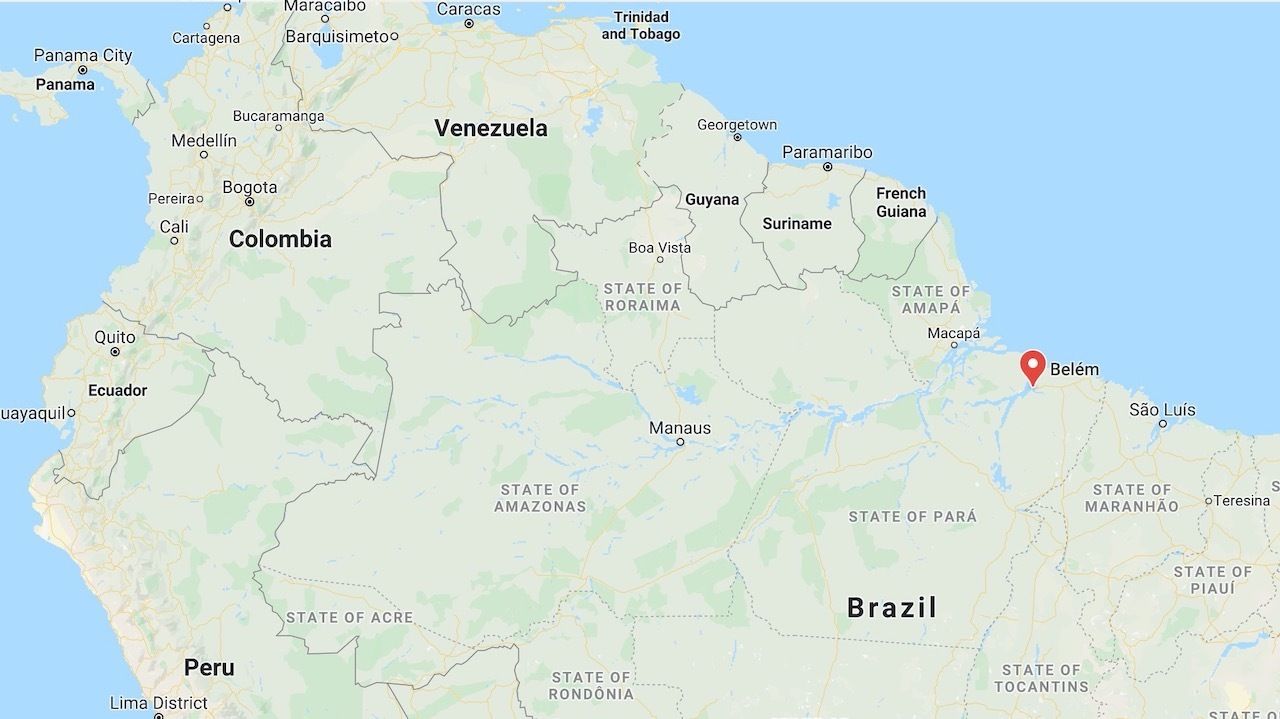
Photo: Google Maps
If you choose to start your Amazonian journey in Brazil, the most accessible cities are Belém, located at the mouth of the Amazon where it meets the Atlantic Ocean, and Manaus, constructed on the point where the two major trunks of the Amazon, the Rio Solimões and the Rio Negro, converge. Both of these cities have major airports, and both are worth exploring for a few days.
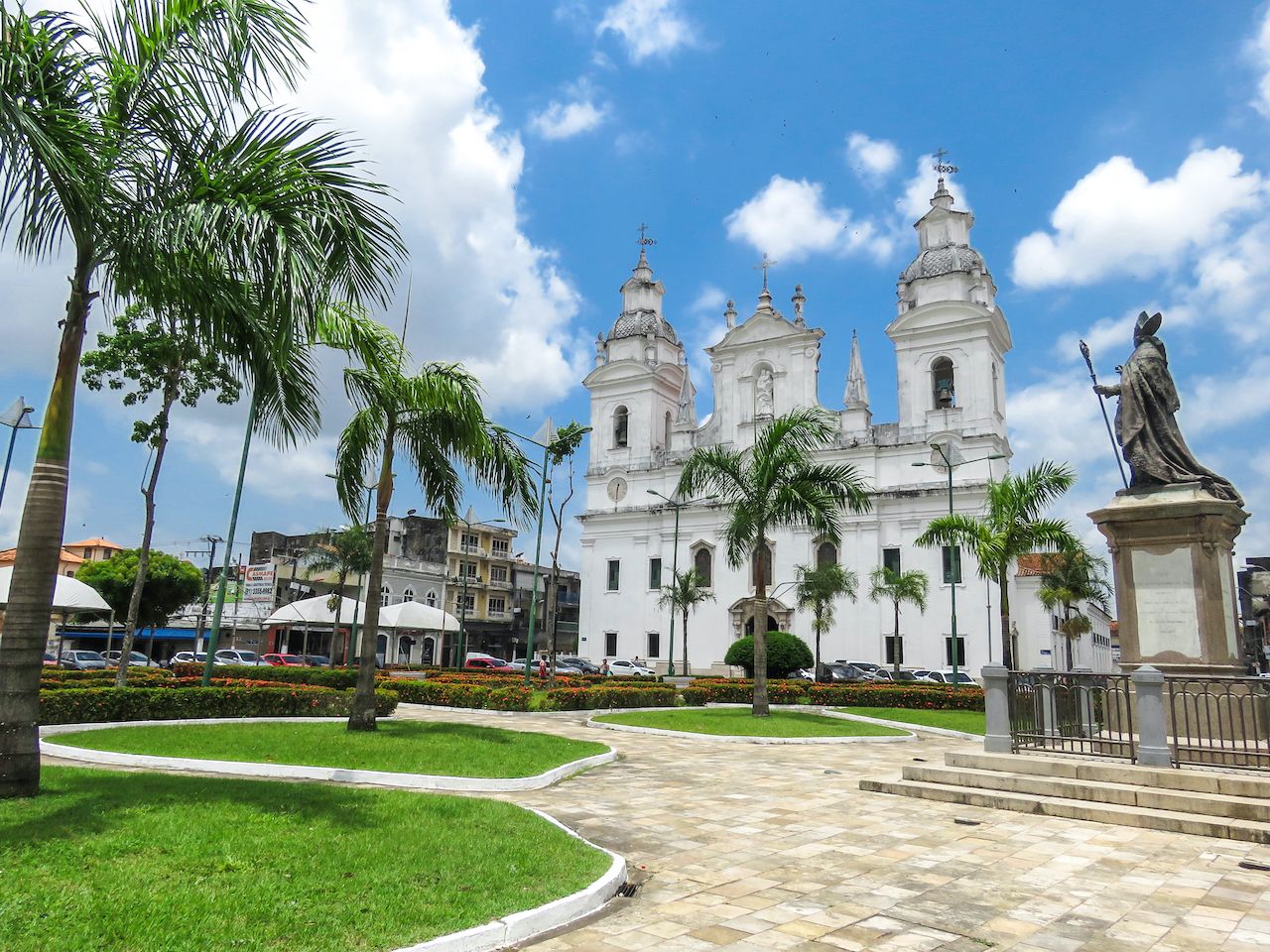
Photo: Sandra Moraes/Shutterstock
Belém is a colonial city where the indigenous cultures of the Amazon fuse marvelously with the African-diaspora culture of northeast Brazil, and where some of the most interesting cuisine and architecture in all of Brazil can be found. One of the most innovative and internationally acclaimed restaurants in South America, Remanso do Bosque, is in Belém.
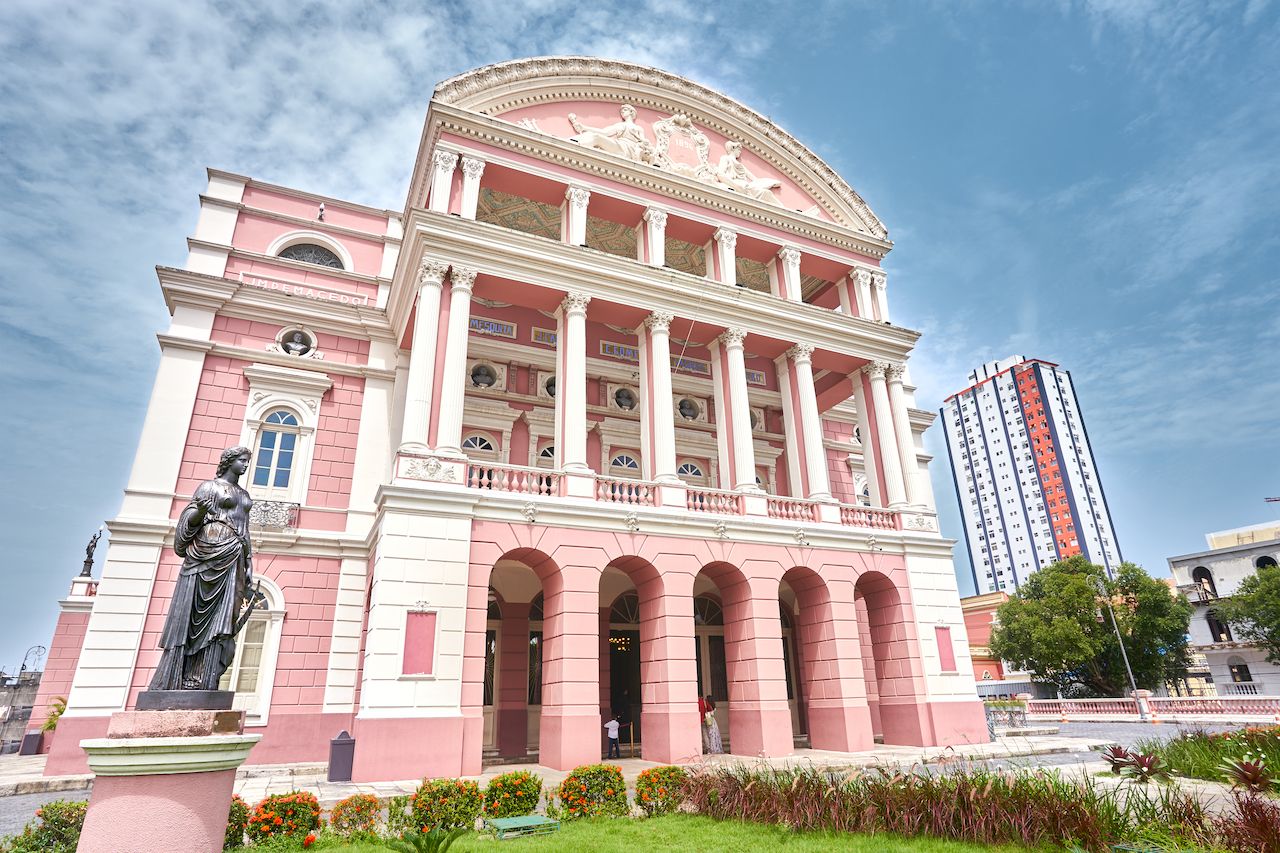
Photo: Karol Moraes/Shutterstock
Manaus is a rainforest metropolis that has unexpected cultural nuggets (there are vibrant Japanese and Haitian diasporas here), fascinating foodways, and a raucous nightlife. The Municipal Market in Manaus has a huge variety of fruits, herbs, and fish that will captivate your attention for many hours. The iconic Teatro Amazonas and its surrounding plaza are the de facto hub for backpacker bars, hostels, tourist-friendly restaurants, and street music. Enjoy a bit of street samba, ice-cold Antarctica beer, and fellowship with other travelers at the funky Bar do Armando.
In Manaus, tickets for cargo-passenger ships are purchased at the waterfront near the Municipal Market. In Belém, you can acquire tickets about 12 miles north of the city center in the port of Icoaraçi. We strongly recommend that you purchase your tickets with a local to avoid a heavy “gringo tax,” which might leave you paying two to three times the honest price of the ticket. Ticket prices are not fixed, and the time of year and your haggling prowess will factor into how much you pay. A week on a cargo-passenger ship, roughly the amount of time it takes to get from Belém to Manaus or Manaus to Colombia, will cost somewhere between $250 and $300. Note that this is likely all you’ll need to spend for the week, as food is included and there is little chance of a shopping spree in the small villages where the ship stops.
Belém is the city furthest east in the Amazon, so if you’re planning to traverse the Amazon Basin in its entirety, start here and head west (upriver). While there are plenty of interesting towns to visit between Belém and Manaus, virgin rainforest simply no longer exists in this section of the Amazon. So, if you would rather bypass a couple days of deforested wasteland, start your journey farther west in Manaus.
You can just as easily start your journey on the Amazon’s western side, for example in Leticia, Colombia; Iquitos, Peru; or Coca, Ecuador. They are relatively large cities with ships heading east. Starting your journey on this side will shorten the time between destinations since you will be sailing downriver instead of upriver.
Best routes to take
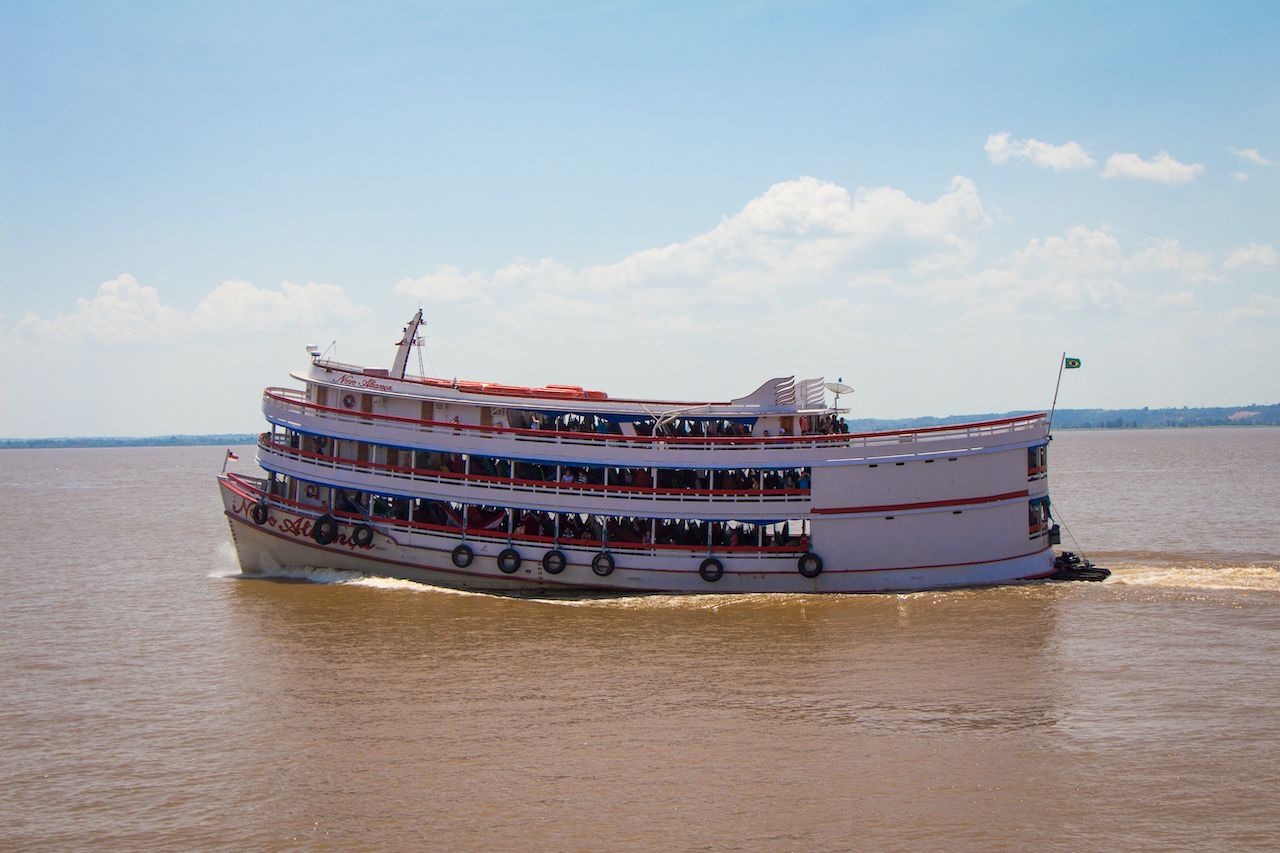
Photo: Mariano Villafane/Shutterstock
You can reach just about any port in the Amazon — including across international borders — from any other port. The vast web of waterways is so interconnected that a boat traveler could go from Suriname all the way to Bolivia, or from Ecuador all the way to the Atlantic. This is not to say that one single boat will carry you the whole way. For most destinations, except for the most popular routes — for example, from Belém to Santarém or Santarém to Manaus — you will have to take a series of boats. Since boats only leave when there is sufficient demand or on a sporadic schedule, you might find yourself waiting in a tiny village or military base for several days. For some, it’s boring, and for others, it’s a great way to go deep.
For a first journey, we recommend the classic route of Manaus to Tabatinga, the last city in Brazil before the borders with Colombia and Peru. This route, about one week in duration and up the Rio Solimões, will immerse you in pristine, old-growth forest and allow you to explore about a dozen villages along the way. If you want to continue even further east, Tabatinga’s ships can carry you deep into Peru and Ecuador.

Photo: gary yim/Shutterstock
The same day you leave Manaus, you will encounter the Encontro das Aguas (the Meeting of the Waters) where the muddy, dense Rio Solimões hits the transparent Rio Negro. It is a beautiful and surreal sight as the waters do not mix for miles and the two colors of water run parallel to each other. Human settlements thin out after the first day, and after three or four days you will see nothing on the shore except ancient, majestic rainforest, and only pink river dolphins and the occasional island breaking the surface of the water, for days.
Rising from your hammock with the sunrise over the river, the day begins at about 6:00 AM with a breakfast of fresh fruit, very strong Brazilian cafezinho, and bread with cheese and tucumã, a dense, orange coconut. There is not much to do in between meals, so we suggest bringing a good book, a guitar, or a journal. If you speak Portuguese or Spanish, the other passengers will be more than willing to talk, play dominos, or strum a guitar with you. If you don’t speak these languages, chances are that at least some of the younger passengers will know a little bit of English. You will meet colorful, fascinating characters: indigenous residents who speak nearly extinct languages with each other; scarred and weathered fishermen; soldiers traveling between military bases; and, sometimes, even contraband runners.
Each boat offers a different experience, with varying levels of comfort, food quality, and safety. The boats that undertake longer journeys, such as the one from Manaus to Tabatinga, tend to be newer, much larger, and more comfortable all around. The meals — often consisting of fish, rice and beans, a simple salad, and the ubiquitous farinha (ground and fried manioc powder) — are usually eaten in shifts in a small mess hall, and on some ships, the captain will require that passengers remove hats and listen to a short blessing over the food over the public announcement system. Most ships will also have a bar, where you can buy alcohol, cigarettes, soda, junk food, and bottled water.
When the ships anchor in a village to unload their wares, passengers are permitted to leave the boat and walk around. The villages usually have a plaza, a cathedral, and a handful of general stores, bars, and street-food vendors. If you’re in the market for cachaça (Brazil’s notoriously potent version of rum) infused with snakes, you’ll be in luck. You can also buy Amazonian tobacco, known as mapuche, that contains 15 times the amount of nicotine as industrialized tobacco. The captain will blow a whistle about 10 minutes before the boat is to depart again, and you’d better make sure you’re making your way back to the boat when you hear it. Nobody will wait for you.
After dinner, usually around 6:00 PM, the day begins to wind down, with a lights-out order around 10:00 PM. On some ships, the bar will stay open after dinner and passengers will spend a few hours watching TV, drinking, or partying to the sound Brazilian dance music over the speaker system.
What to bring and cargo-passenger boat tips

Photo: Daniel Andis/Shutterstock
First and foremost, make sure you have a hammock and rope to tie it up on board. They can be easily purchased in the Municipal Market in Manaus. The larger boats offer the option of purchasing a private or shared cabin on board (roughly three to four times the price of a hammock ticket), but if you’re okay roughing it, you can simply sling up your hammock across two poles running the length of the ship. Remember that where you put your hammock can make or break your journey. Find a location that is neither too close to the bathroom or too close to the ship’s motor.
We suggest taking a small bag that can be hung from the hammock poles and hold items that you take out the most often, such as toiletries, books, glasses, etc. The floors can get dirty and wet, and so we advise even bringing a large carabiner to attach your backpack to a pole above the floor if necessary. Bring toilet paper; sometimes the ships have it but sometimes they don’t. Bring a clean towel, insect repellant, and stomach medicine. A small first aid-kit is never a bad idea.
Unfortunately, theft is common on cargo-passenger ships, so watch your stuff vigilantly. New passengers get on and off the boat at just about every stop, and these are the times when you’re most likely to get cleaned out. We suggest sleeping with your passport, money, phone, and other valuables in your pockets and opening your large backpack as few times as possible. Along these lines, think long and hard about whether it’s worth risking bringing a laptop or an expensive camera.
In general, cargo-passenger ship travel is safe, but there are risks. Even in recent years, ships have tragically sank when captains have fallen asleep in the middle of the night. Piracy, involving violence against crews and passengers, does exist on the Amazon, but it’s rare and the Brazilian military patrols the waterways pretty carefully.
Lastly and most importantly, make sure to get a yellow fever vaccine and the accompanying paperwork. If you cross any borders in the Amazon — and it’s well-worth doing so — you will need to present proof of vaccination at every customs stop.
Cool places along the way
Alter do Chão, Pará
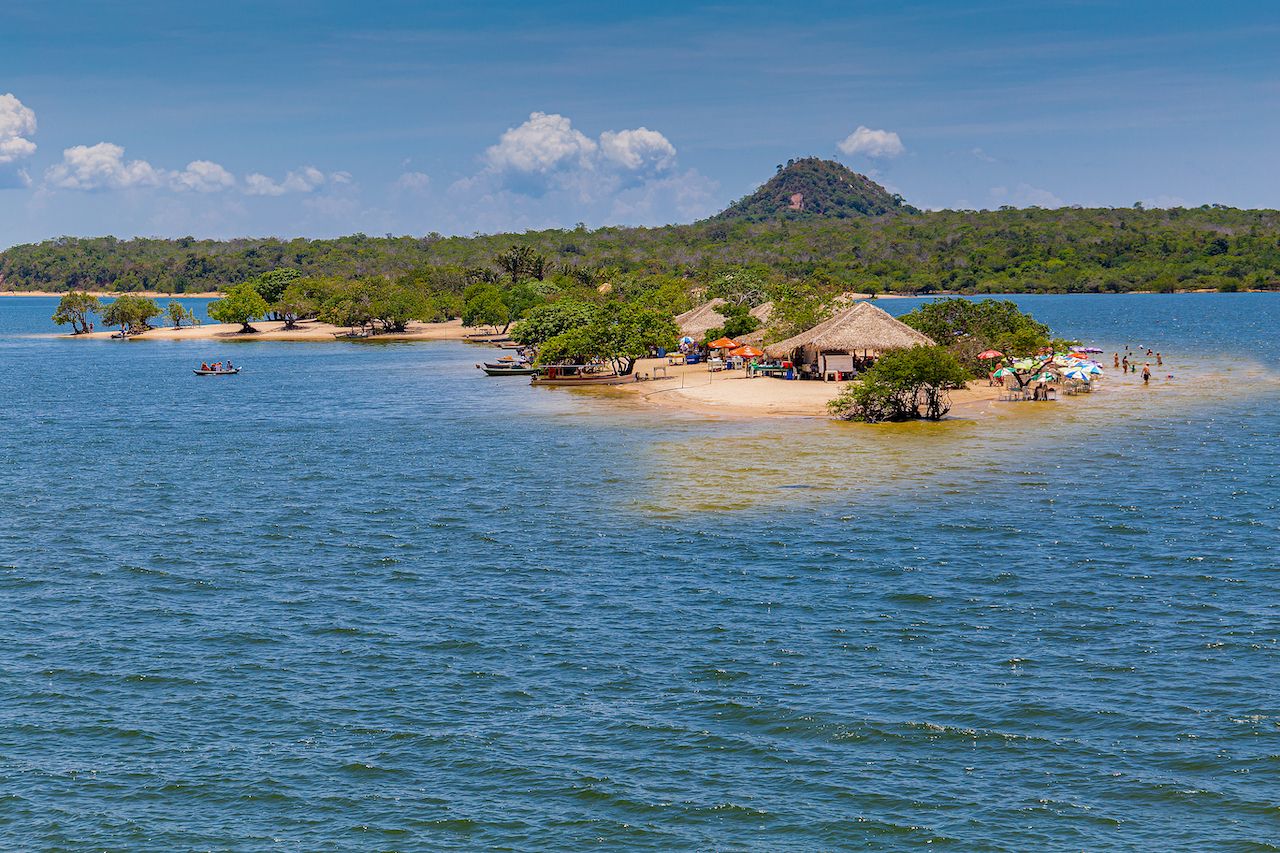
Photo: Ticiana Giehl/Shutterstock
No one would have guessed that one of the top-rated beaches in all of Brazil is hundreds of miles inland, but with its turquoise water, mountainous enclosure, and access to pristine rainforest, Alter do Chão, halfway between Manaus and Belém, is mesmerizing and worth a detour. While the small hub of Alter do Chão is built around tourism, Santarém, located about an hour away, is a major city in the Amazon and also worth exploring for a day. For a great souvenir, or snack for your cargo-passenger ship ride, purchase some of the artisanal chocolate stuffed with cupuaçu, açaí, or coconut. To satisfy your adventurer’s taste buds, try a cup of the classic shrimp soup of the eastern Amazon, tacacá, from a street vendor on the plaza.
Tefé, Amazonas
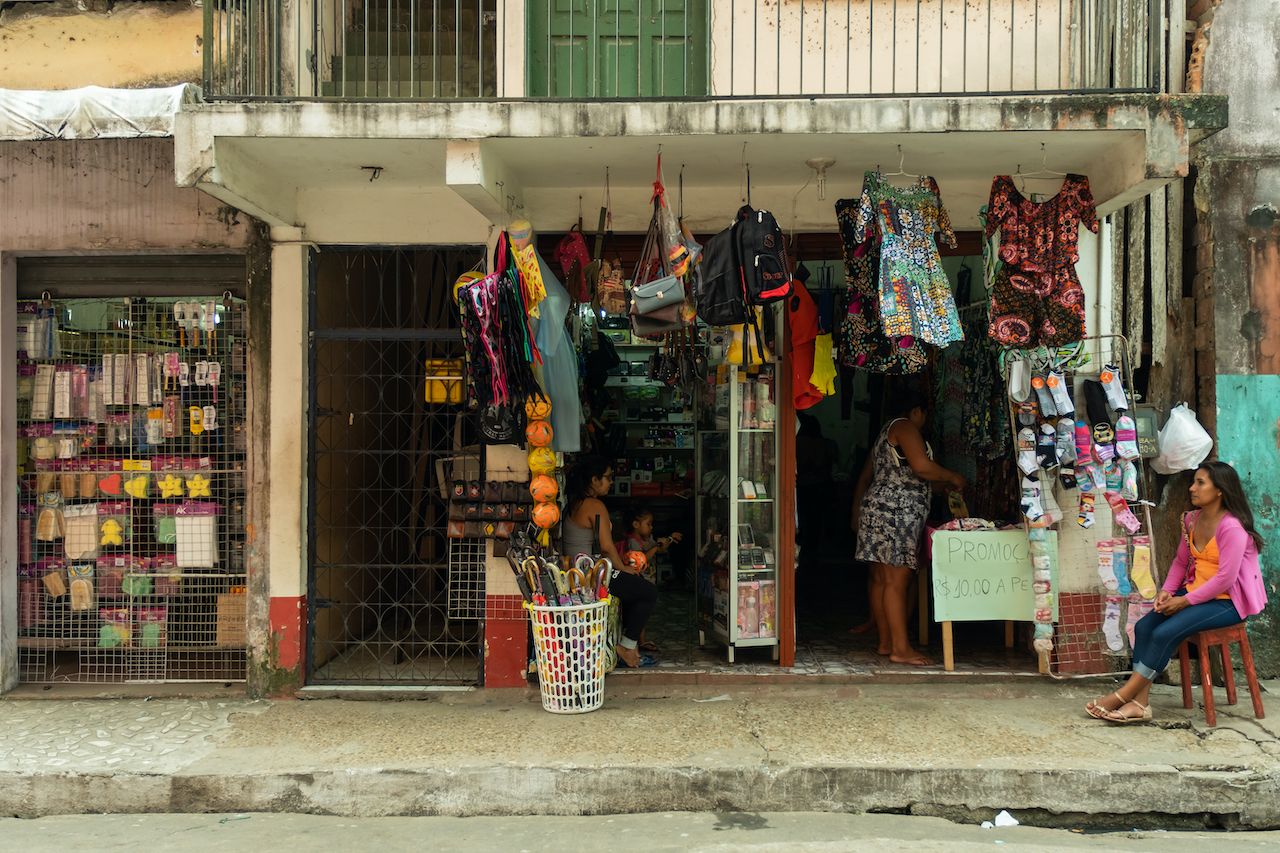
Photo: Suong Le/Shutterstock
Tefé is a handsome city built on an island halfway between Manaus and Tabatinga, originally constructed around a 17th-century Carmelite mission. If you’ve ever wondered what it’s like to live somewhere with no airport and only accessible by a multi-day boat ride, spend a few days there. The inhabitants, although probably much more comfortable with Portuguese than any Amerindian tongue, are the direct descendants of the indigenous tribes from the central Amazon. Due to its inaccessibility, Tefé is also known as a hideout for outlaws of all stripes from Brazil, Colombia, and Peru.
São Gabriel da Cachoeira, Amazonas
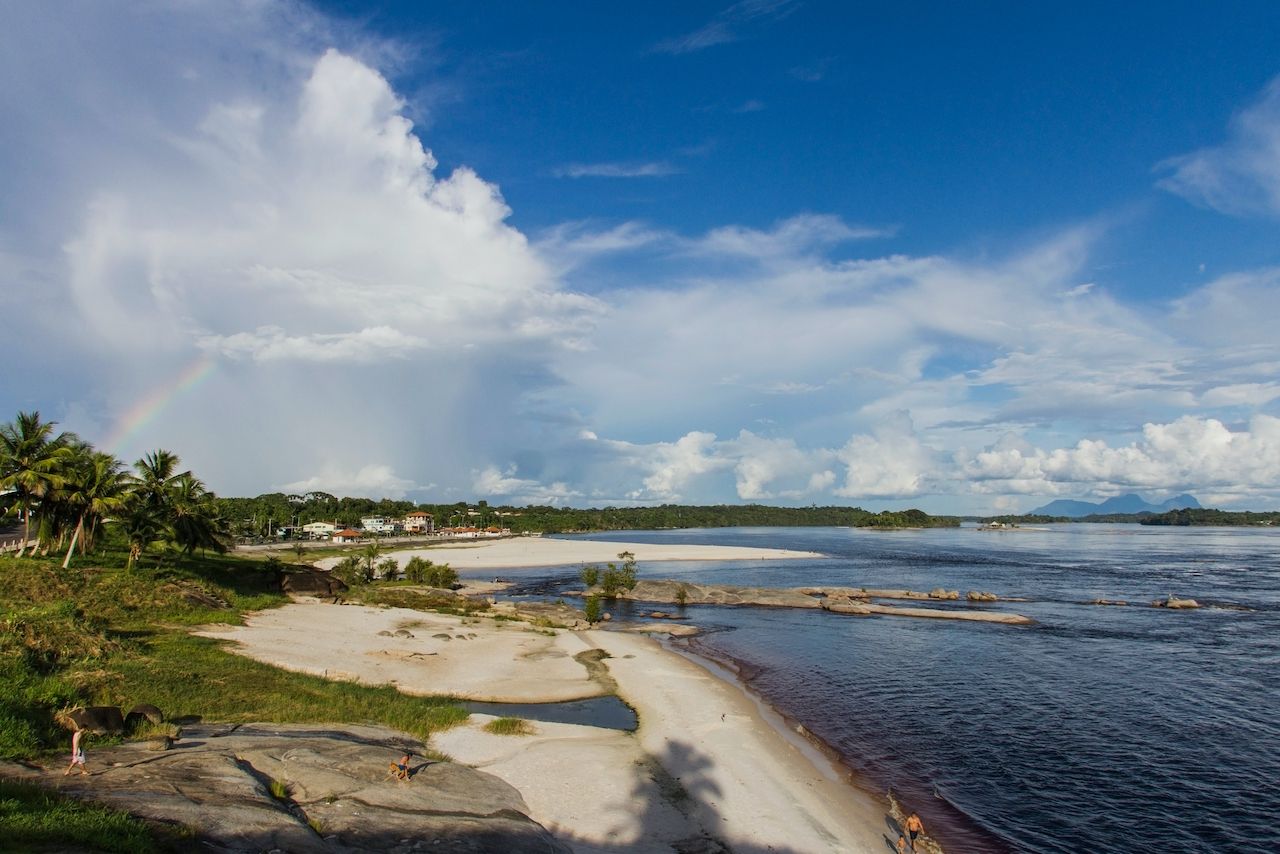
Photo: Hans Denis Schneider/Shutterstock
If you follow the Rio Negro as far as a cargo-passenger boat can go, you will hit São Gabriel, the last city in Brazil before Colombia. The rapids around this city allow for only tiny motorboats to continue further upriver. São Gabriel is the most indigenous city in all of Brazil, and its municipal government recognizes 25 official languages. Aside from being a melting pot of indigenous cultures, São Gabriel is chock-full of anthropological researchers and soldiers, due to having one of the largest military bases in the country. If you want to understand indigenous culture in the Amazon, and possibly even get permission to visit a protected community, then São Gabriel is your destination. The open-air market in the city is a must-see, and some of the most famous chefs in Brazil have been known to visit São Gabriel in search of ingredients and inspiration.